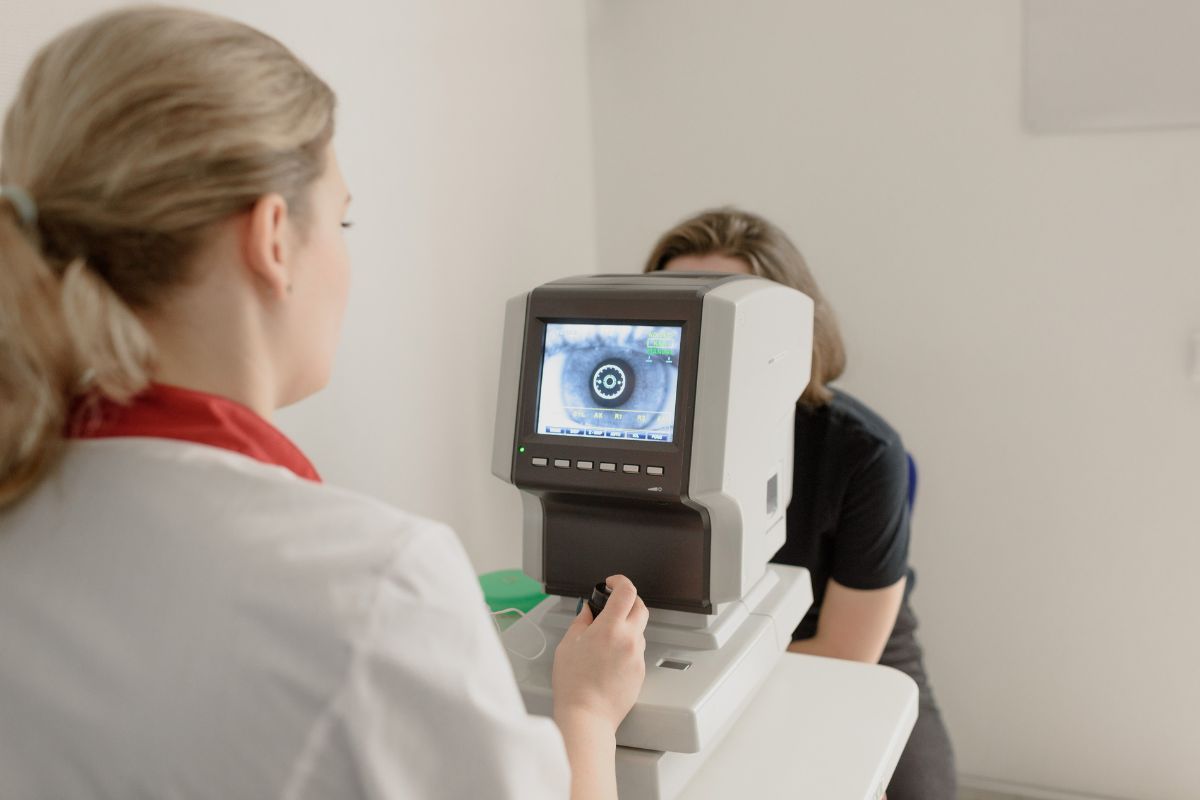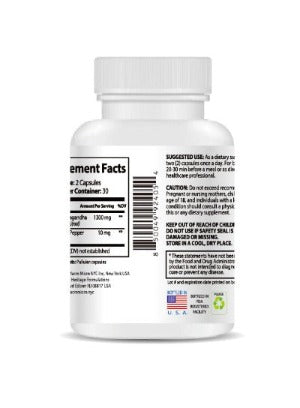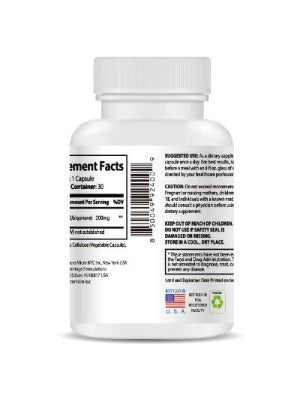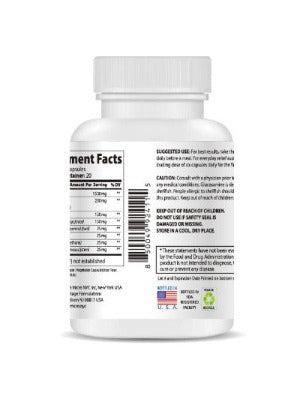What Causes Dry Eye Syndrome and How to Treat It: A Comprehensive Guide
Dry eye syndrome, a prevalent condition affecting millions worldwide, is characterized by a deficiency in the quantity and/or quality of tears, leading to discomfort, irritation, and impaired vision. In 2025, with our increasingly digital lifestyles and environmental stressors, understanding the root causes and effective treatments for dry eye syndrome is more crucial than ever. This comprehensive guide will delve into the multifaceted nature of this condition, exploring its various causes, outlining effective treatment strategies, and offering preventative measures to help you reclaim the comfort and clarity of healthy eyes. We will also discuss innovative solutions like the Wise Quest Soothing Eye Patches - 3-Month Wellness Pack to provide long-term relief.
The Multifaceted Nature of Dry Eye Syndrome
Dry eye syndrome isn't a simple condition; it's a complex interplay of several factors that contribute to inadequate tear production or excessive tear evaporation. These factors can interact in intricate ways, making diagnosis and treatment a personalized journey. Let's explore these contributing elements in detail:
Environmental Factors: The Impact of Our Surroundings
Our environment plays a significant role in the development and severity of dry eye syndrome. Several environmental elements can exacerbate symptoms:
- Low Humidity: Dry air, often found in air-conditioned or heated spaces, significantly accelerates tear evaporation, leaving the eyes feeling dry and irritated. This is particularly prevalent during winter months or in arid climates.
- Wind Exposure: Wind acts as a natural desiccant, rapidly evaporating tears and further contributing to dryness. Protecting your eyes from direct wind is crucial, especially during outdoor activities.
- Sun and UV Radiation: Prolonged exposure to sunlight, particularly intense UV rays, can damage the delicate tissues of the eyes, impairing tear production and leading to dryness and discomfort.
- Air Pollution: Airborne pollutants, including particulate matter and allergens, can irritate the eyes, disrupt the tear film, and worsen dry eye symptoms. Living in urban areas with high pollution levels increases the risk.
- Smoke Exposure: Exposure to smoke, whether from cigarettes, wildfires, or industrial sources, irritates the eyes and can significantly exacerbate dry eye symptoms.
Medical Conditions: Underlying Health Issues
Many underlying medical conditions can contribute to or worsen dry eye syndrome. These conditions often impact tear production or the overall health of the ocular surface:
- Autoimmune Diseases: Conditions like rheumatoid arthritis, lupus, and Sjögren's syndrome directly affect the body's ability to produce sufficient tears, resulting in chronic dryness.
- Diabetes: High blood sugar levels can negatively impact tear production and increase the susceptibility to eye infections, potentially worsening dry eye symptoms.
- Thyroid Disorders: Imbalances in thyroid hormones, whether hyperthyroidism or hypothyroidism, can disrupt various bodily functions, including tear production, increasing the risk of dry eyes.
- Vitamin A Deficiency: Vitamin A plays a crucial role in maintaining the health of the eye's surface. A deficiency can lead to dry eyes and impaired vision.
- Blepharitis: This inflammatory condition of the eyelids affects the glands that produce the oily layer of the tear film, leading to impaired tear quality and dry eye symptoms.
Medications: Unexpected Side Effects
A wide range of medications can list dry eyes as a side effect, either directly through their mechanism of action or indirectly through their impact on the body's overall hydration.
- Antihistamines: Commonly used to treat allergies, these medications often dry out mucous membranes, including the eyes.
- Decongestants: Similar to antihistamines, decongestants can also lead to reduced tear production.
- Birth Control Pills: Some oral contraceptives can affect hormone levels and consequently influence tear production.
- Isotretinoin (Accutane): This medication, often prescribed for acne, can have a significant drying effect on the eyes.
- Certain Blood Pressure Medications: Some blood pressure medications, particularly diuretics, can contribute to dehydration and thus worsen dry eye symptoms.
Lifestyle Factors: The Impact of Modern Life
Our modern lifestyles contribute significantly to the prevalence of dry eye syndrome. The following factors are often implicated:
- Prolonged Screen Time: Extended periods spent looking at digital screens (computers, smartphones, tablets) lead to reduced blink rates, resulting in decreased tear film replenishment and eye dryness.
- Dehydration: Insufficient water intake can reduce overall body hydration, directly impacting tear production.
- Contact Lens Wear: While contact lenses provide vision correction, improper care, prolonged wear, or use of inappropriate lenses can irritate the eyes and worsen dry eye symptoms.
- Lack of Sleep: Adequate sleep is essential for the body's restorative processes, including tear production. Sleep deprivation can exacerbate dry eye symptoms.
- Environmental Factors at Home or Workplace: Exposure to heating or air conditioning systems, poor ventilation, or other environmental stressors in the workplace or home can significantly impact dry eye symptoms.
Effective Treatments: Relieving and Managing Dry Eye
Managing and treating dry eye syndrome requires a personalized approach. Treatment options range from simple lifestyle changes to advanced medical interventions. Let's explore effective strategies:
Lifestyle Modifications: Simple Changes, Big Impact
Incorporating these simple lifestyle changes can significantly alleviate dry eye symptoms:
- Increase Water Intake: Adequate hydration is crucial for maintaining the body's natural tear production.
- Follow the 20-20-20 Rule: Every 20 minutes, look away from your screen at an object 20 feet away for 20 seconds to reduce eye strain.
- Blink More Frequently: Consciously increase your blink rate, especially when using screens, to help distribute tears across the eye's surface.
- Use a Humidifier: Adding moisture to the air, particularly in dry environments, can help prevent tear evaporation.
- Protect Your Eyes from the Elements: Wear sunglasses and protective eyewear when outdoors to shield your eyes from wind, sun, and dust.
- Avoid Smoking: Smoking significantly increases the risk of dry eye and other eye conditions.
Over-the-Counter Solutions: Immediate Relief
Artificial tears, readily available without a prescription, offer immediate lubrication and relief. However, the formulation and type of artificial tears can vary, and selecting the right one is crucial. Consult your eye care professional for recommendations tailored to your specific needs.
Prescription Medications: Addressing Underlying Causes
In cases of more severe or persistent dry eye, your doctor might prescribe medications to address underlying causes or manage symptoms more effectively. These medications might include:
- Restasis (Cyclosporine): This medication helps stimulate tear production.
- Xiidra (Lifitegrast): This medication reduces inflammation.
- Other Prescription Eye Drops: Other prescription eye drops may be used to address specific aspects of dry eye, such as inflammation or tear film instability.
Innovative Solutions: Natural Approaches to Dry Eye Relief
For those seeking natural, soothing relief, consider the Wise Quest Soothing Eye Patches - 3-Month Wellness Pack. These non-toxic patches, crafted with nature's finest ingredients, provide a gentle, long-term solution for chronic dryness and strain. The convenient 3-month supply makes it easy to incorporate this soothing treatment into your daily routine.

Investing in your eye health with the Wise Quest Soothing Eye Patches - 3-Month Wellness Pack is a proactive step towards combating dry eye syndrome. These patches offer a comfortable and effective method to experience the soothing relief you deserve. They're a valuable addition to your overall dry eye management strategy.
Long-Term Strategies for Eye Health
Maintaining optimal eye health requires a holistic approach that extends beyond simply treating existing symptoms. Here are some essential strategies for long-term eye well-being:
- Regular Eye Exams: Schedule regular comprehensive eye exams with an ophthalmologist or optometrist to monitor your eye health, detect any potential issues early, and receive personalized advice.
- Protective Eyewear: Always wear protective eyewear during activities that could potentially harm your eyes, such as sports, yard work, or exposure to dust and debris.
- Balanced Diet: A nutritious diet rich in antioxidants, omega-3 fatty acids, and other essential nutrients contributes to overall eye health and can help support tear production.
- Quit Smoking: If you smoke, quitting is crucial, as smoking significantly increases the risk of dry eye and other eye diseases.
- Stress Management: Chronic stress can negatively affect various bodily functions, including tear production. Practicing stress-reducing techniques, such as meditation, yoga, or spending time in nature, can be beneficial.
By understanding the multifaceted causes of dry eye syndrome and implementing appropriate treatment strategies, including the convenient and effective Wise Quest Soothing Eye Patches - 3-Month Wellness Pack, you can achieve significant relief from symptoms and protect your long-term eye health. Remember, prioritizing your vision is an investment in your overall well-being. Don't hesitate to seek professional help if you experience persistent dry eye symptoms.









